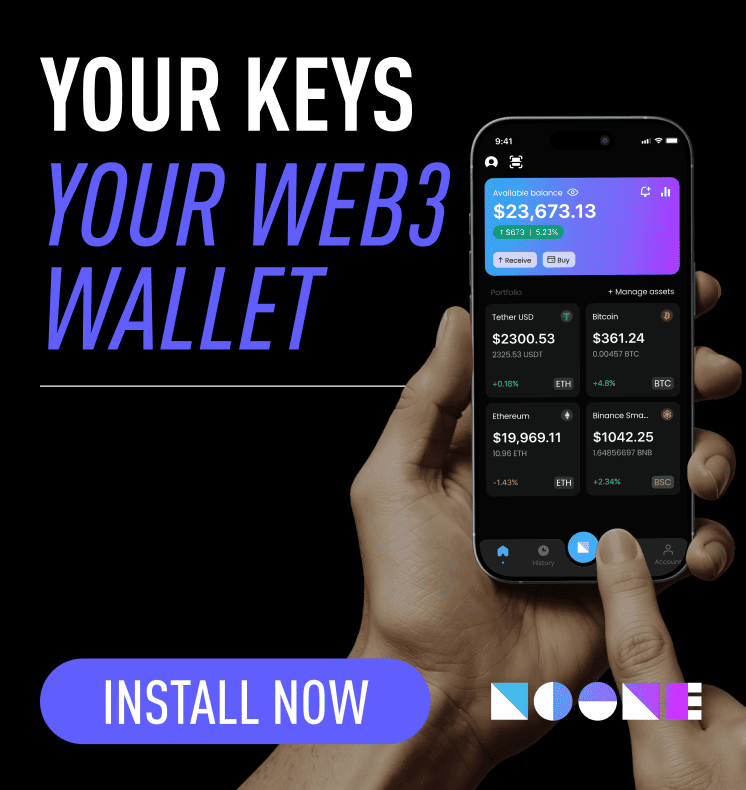MetaHash

MetaHash is a Blockchain 4.0 based on the TraceChain protocol. The project is based on a decentralized digital asset exchange network and a platform for creating decentralized real-time applications.
Contents
What is it?
MetaHash is a decentralized network for digital asset exchange and a platform for building decentralized applications that work in real time. MetaHash is designed to create a single solution that allows blockchain systems of the future to unite into a single decentralized network, capable of recording each and every transaction. The self-regulating #MetaHash network, in fact, creates a basis for the emergence of a fully-fledged branch of the decentralized internet. It doesn’t depend on individual creators once launched and is managed by open voting of users or #MetaHashCoins holders.
Parts of the project
- TraceChain
The solution to the speed problem is based on an automatic self-learning algorithm for routing signals over the network. Starting at a rate of 50,000 transactions per second (the capability of a 100-megabit channel), it grows as more nodes with higher bandwidth are added to the network forming the core of the network and improving the reliability of additional #DataChains which are needed for running applications.
- MetaGate
This is an open source interface using the #TraceChain protocol making it possible to work with #MetaApps and networks. Third-party developers can use the #MetaGate code to embed #MetaApps and #TraceChain/ blockchain features into various applications and browsers.
- MetaApps
Nodes added to the #MetaHash network are used by decentralized applications. The core code of #MetaApps optimizes the location of application copies based on the required resources and financial motivation of the owners of nodes connected to the network. Any developer can create and publish an application in #MetaApps, and #MetaHashCoin holders will decide by open vote whether or not to approve it, reflecting the universal values of all the network members.
- MetaHashCoin
The network’s digital payment currency. It is used to ensure consensus, to pay for all network services and to control self-financing. Recognised by FINMA on July 3, 2018 as Utility token with payment function. #MHC tokens are qualified as payment means in accordance with the AntiMoney Laundering Act.
History
The technical part of the project was based on the achievements of AdSniper, created in 2012 through 2016 in the field of advertising technologies:
- A network library for receiving signals, working on C++ and capable of simultaneously receiving and sending more than 1,000,000 requests per second to one inexpensive standard server;
- A network library for synchronizing signals within a cluster that manages gigantic data flows between cluster machines;
- A machine learning system that decides in 10 milliseconds to respond to a signal taking into account multifactorial interrelationships;
- Own analogue of Hadoop’s for similar systems in C++ for distributed processing of large data.
Now, each of the geographically dispersed nodes belonging to AdSniper accepts requests from the entire internet at the rate of more than a million requests per second and can be scaled without limits by adding more servers.
Team
Founders
- Gleb Nikitin (Co-Founder, Partner, CRO)
Serial entrepreneur with more than 20 years of experience in the development of large-scale technological projects. Founder of AdSniper. Over the past 10 years, the company has created highly loaded advertising networks. The company’s own large data processor incorporates servicing petabytes of data, fast NoSQL and SQL databases, artificial intelligence systems and C ++ libraries for highly loaded advertising services, processing requests for advertising from the entire internet.
- Anton Agranovsky (Co-Founder, Partner, CBDO)
Investor, expert, an opinion leader in the field of establishment and development of IT companies. Board member of Plastic Media and SMX Communications. Invests in IT startups and accompanies the company grew from the idea to IPO. In 2008-2017 – the founder and president of Destiny Development, one of the first gaming companies on the Russian internet market known both for its own developments and localizations
Structure
- Technical department;
- Marketing department;
- Business development;
- Content department;
- Operational group;
- Legal Department.
Advisors
- Ian Balina
Ian Balina is an influential Blockchain and Cryptocurrency Investor, Advisor, and Evangelist. He has appeared in The Wall Street Journal, Forbes, CNBC, Huffington Post, The Street, Inc. and Entrepreneur Magazine for his work in analytics, cryptocurrencies, and entrepreneurship. #MetaHash has been scored 86.39% in the recent review by Ian Balina and his team of analysts.
- Scott Walker
An Angel Investor and Serial Entrepreneur who has invested in or started over a dozen companies and a founding LP in Blockchain Capital.
- Brock Pierce
American entrepreneur, co-founder of Blockchain Capital (EOS, Tether etc), Chairman of the Bitcoin Foundation, and operator of one of the top AngelList syndicates. Previously, Brock founded Internet Gaming Entertainment, ZAM etc. Guest lecturer at Singularity University, Stanford, USC, and UCLA.
- Liu Jubo
Liu Jubo is the current Secretary-General of the Digital China Federation and the Secretary-General of the China IT Leaders Summit. He is also the Co-founder of the Chinese Angels Investor Association, Chairman of the World Angels Investor Conference, and the Chief Secretary of the Chinese Digital Federation to its board of advisors.
- Hristo Tenchev
Co-founder of a number of blockchain and crypto-related projects like LockChain.co, Bitcoin7, and others. Founder of XS Software, one of the most successful gaming companies in Europe with more than 50 million registered players worldwide.
ICO
Token Sale started at June 29, 2018. The total amount of sold coins was 920.000.000 MHC. The end of the Token Sale – August 18, 2018.
MHC
The sphere of application of #MHC is quite wide. Firstly, #MHC is used to pay for instant and reliable transactions made with any assets at an adequate fixed price. Secondly, any decentralized application requires resources to host (including the #MetaHash network itself), so, the #MHC is just the financial tool within the network. Thirdly, storing data of applications that lack the speed and volume of data in other Blockchain systems would be impossible without the support of #MHC. And, of course, many other additional services also need to be paid (for example, listing in #MetaApps or advertising in #MetaGate).
MetaApps
With #MetaHash, any program written in any programming language under any operating system can become a decentralized app and work with both data from the internet and data from any blockchain system. #MetaApps run in real time as regular websites and services, but they are decentralized and even their creator cannot change their behaviour unless their users or owners of their digital assets (tokens) cast their votes. #MetaApps is an evolution of smart contracts and can be used to decentralize any service. These are independent programs that can exist forever and do not belong to anyone. They work exactly as programmed and cannot be tampered with by third parties.
TraceChain
TraceChain is the new internet protocol that the #MetaHash network is based on. #TraceChain uses a mathematical model of optimal signal propagation across the network. The synchronization of thousands of computers overloads a network and slows it down. To solve this issue, #TraceChain relies on mathematical algorithms powered by #TraceChain AI – all signals go from the outer radius to the cores. The signals are synchronized in multiple powerful cores and go back across the network. The more computers that need to be simultaneously synchronized, the higher the load on the network. The cores are not static and are constantly altered by voting. Adding high-performance computers to the network does not automatically make them cores, which protects the network against attacks. The core’s segments are fully decentralized and protected by Trust algorithms and additional verifications. The performance of the network core’s segments is checked and protected by external radiuses.
Forging

Forging rewards come from the forging pool and transaction commissions. Rewards are calculated every 6 hours when a new block (trim) is formed. The frequency of calculations and payments may vary depending on technical requirements, at the discretion of the #MetaHash Team. Unlike the PoW system, #MetaHashCoins forging servers don’t go out of date and don’t lose their effectiveness, as their number is limited and depends on #MHC stakes. The only thing that will need improvement is the system’s core, (if scaling becomes necessary,) but transaction commissions at this stage will fully cover the upgrade.
MetaGate

With all the technical complexity, #MetaGate is much easier for the user than the usual cryptocurrencies. All the necessary elements that provide network security function in the background, leaving the end user with a concise and clear interface. MetaGate consists of:
- A multi-asset wallet that supports “light mode” without downloading the entire blockchain. Data comes from different sources of the decentralized network and is checked by the user. Of course, the wallet can work in “full node” mode or by selecting trusted nodes that have a copy of the #MetaChains application. (Private keys from all blockchains used will be stored only by the user.) The wallet which can be built from the source code in order to ensure the source code is validated by the community and that the wallet does, in fact, belong to the user.
- A catalogue of decentralized applications and a browser to work with them. Any decentralized application built on #MetaHash can be accessed, not only through the standard internet domain but also via #MetaGate or it can be allocated to a separate program.
Events
- World Blockchain Summit Moscow (19-20 May)[1]
- Blockchain Forum San Francisco (16-10 June) [2]
- BLOCKCHAIN EXPO EUROPE 2018 (Amsterdam, 27-28 June) [3]
- GameNode (21-22 July) [4]
- World Blockchain Congress in Bahrain (29-30 July) [5]
- #MetaHash organized blockchain tech meetup in Beijing (28 July)[6]
- #MetaHash sponsored Crypto Finance Conference (5–7 September) [7]














 Twitter
Twitter
 Telegram
Telegram
